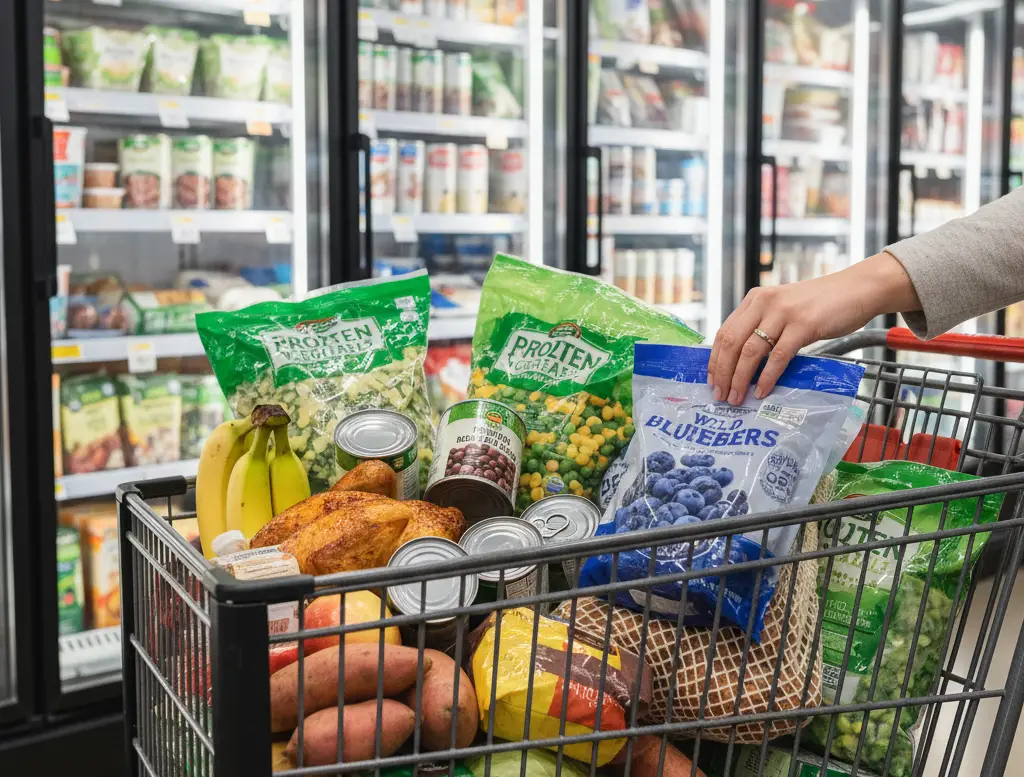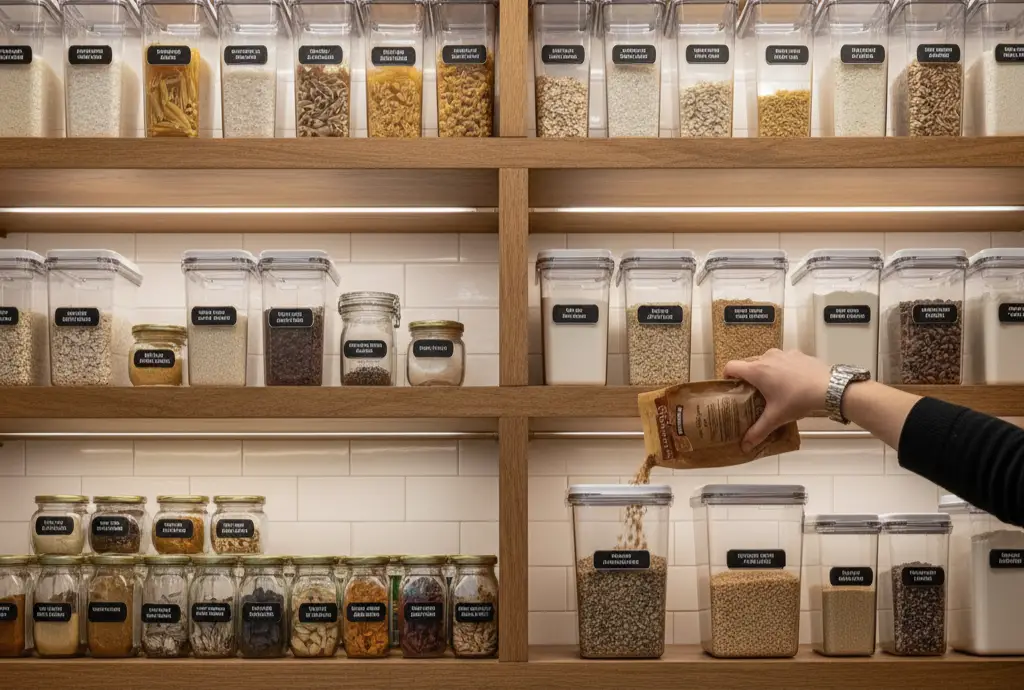8 Smart Ways Americans Are Fighting Back Against Rising Grocery Prices

If you’ve been to the grocery store lately, you’ve probably experienced that familiar moment of sticker shock. The total flashes on the screen, and you think, “Wait, how did that get so high?” You’re not alone. Across the United States, families are feeling the pinch as grocery prices continue to climb. From eggs to bread to fresh produce, the cost of everyday essentials has stretched household budgets thinner than ever.
But Americans are nothing if not resourceful. Instead of simply accepting these higher prices, people are getting creative—adjusting how they shop, cook, and budget to make their dollars go further. Whether it’s swapping name brands for generics, embracing meal planning, or finding deals in unexpected places, consumers are learning to fight back with practical, real-world strategies.
Here are eight smart ways Americans are pushing back against rising grocery prices—and how you can join them.
1. Meal Planning Like a Pro

Winging it at the grocery store might have worked once upon a time, but now it’s practically a financial trap. More Americans are realizing that the key to saving money starts before they even leave the house. Meal planning is all about building your grocery list around what’s on sale, what’s already in your pantry, and what meals can stretch into multiple servings.
Instead of tossing random ingredients into your cart, you plan out the week—breakfasts, lunches, and dinners—then buy only what you need. It reduces food waste, eliminates impulse buys, and cuts down on midweek “emergency” store runs. A smart trick is to check your grocery store’s weekly flyer online before you plan. If chicken thighs or ground turkey are on sale, plan your meals around those items. You’ll save more than you think by simply sticking to a plan.
2. Switching to Store Brands and Affordable Alternatives

Let’s face it—name brands are nice, but they’re not always necessary. With prices on the rise, many shoppers have discovered that store brands and lesser-known labels often deliver the same quality for a much lower price. In fact, some private-label products are made by the very same manufacturers that produce the name brands, just with a different label slapped on the box.
The difference can add up fast. Swapping a few big-brand staples—like cereal, pasta, or cleaning products—for store versions can trim several dollars off each shopping trip. And when you multiply that by weeks and months, that’s real savings. The truth is, your wallet won’t miss the fancy packaging.
3. Taking Advantage of Coupons, Sales, and Loyalty Programs

Coupons used to be something you clipped out of the Sunday paper, but now they’re digital, easy to access, and more valuable than ever. From grocery store apps to cashback websites, Americans are finding ways to stack discounts and make every purchase count.
Signing up for loyalty programs is one of the simplest ways to save. Most stores now offer automatic rewards, digital coupons, or personalized discounts based on your shopping habits. Before you head to the store, spend a few minutes scrolling through the app or checking the weekly sales. A little prep time can save you enough for an extra meal—or that sweet treat you’ve been eyeing.
And don’t overlook old-fashioned sale hunting. When your favorite pantry staples go on discount, stock up. Just be sure you’re buying what you’ll actually use before it expires.
4. Changing What Goes in the Cart

A major way Americans are adapting is by rethinking what foods they buy. When the price of steak jumps through the roof, many are choosing more affordable proteins like chicken, beans, or eggs. Shoppers are also switching to in-season produce or frozen fruits and vegetables, which can be just as nutritious but much easier on the budget.
It’s all about smart substitutions. If blueberries are too pricey this week, grab a bag of frozen ones. If fresh salmon costs more than expected, try canned tuna or lentils for protein instead. With a little creativity, you can still eat well without breaking the bank. In fact, these substitutions often lead to trying new recipes and flavors you might not have discovered otherwise.
5. Cooking at Home More Often

Eating out has its perks—no dishes, no prep, no cleanup—but it also eats into your budget faster than you realize. As food prices continue to rise, more Americans are trading restaurant meals and takeout for home-cooked dishes. Cooking at home not only costs less per serving but also gives you complete control over portions and ingredients.
You don’t have to become a gourmet chef to make it work. Start with simple, affordable meals like soups, stir-fries, and casseroles that stretch across several days. Double up on recipes and freeze the leftovers for busy nights. Before you know it, you’ll be saving money and eating better. Bonus: you’ll rediscover the satisfaction of a good home-cooked meal.
6. Buying in Bulk and Storing Smartly

Bulk shopping isn’t just for big families anymore—it’s one of the smartest ways to beat rising grocery prices. Buying staples like rice, pasta, flour, or canned goods in larger quantities can save you serious money in the long run. When something you use often goes on sale, stock up while the price is low.
The trick is to be strategic. Bulk buying only works if you have the space to store items properly and will actually use them before they go bad. Invest in airtight containers, freezer bags, and clear storage bins to keep your food fresh and organized. Freezing meat, bread, or leftovers is another great way to stretch your grocery dollar and prevent waste. Think of your freezer as your personal backup pantry—it’s there to save you money when prices spike.
7. Exploring Discount and Alternative Grocery Stores

More shoppers are venturing beyond their usual supermarkets to find better deals elsewhere. Discount grocers, warehouse clubs, farmers markets, and even international stores often have lower prices on everyday essentials. Some people are even splitting their shopping between a few different stores—buying produce in one, bulk items in another—to maximize savings.
It might take a little extra time, but the savings can be worth it. For example, you might find cheaper produce at a local farmers market or discounted pantry goods at an outlet grocery store. If you have access to multiple retailers, take a few weeks to compare prices and see where you get the best value for your money.
8. Tracking the Budget and Making Smart Trade-Offs

When every dollar counts, awareness is everything. Many Americans are getting serious about tracking their spending—not just on groceries, but across their entire household budget. By identifying where money is going, it becomes easier to make smart trade-offs.
Maybe that means skipping a streaming subscription to free up funds for groceries. Or swapping out a pricey brand for a cheaper one so you can splurge on fresh produce. The point isn’t to deprive yourself—it’s to spend intentionally. Budgeting apps, spreadsheets, or even a good old notebook can help you stay on top of it all. The more you know where your money goes, the more power you have over it.
Final Thoughts

Rising grocery prices are frustrating, but they don’t have to control your budget—or your peace of mind. Americans are proving that with a little strategy, creativity, and persistence, it’s possible to fight back and win. From planning meals and hunting for sales to exploring new stores and cutting back on dining out, small choices can add up to big savings over time.
What matters most is being intentional. Instead of reacting to higher prices, take charge of how you shop and what you buy. These habits not only save money but also build confidence in your ability to adapt and thrive, even when the economy feels unpredictable.
At the end of the day, your grocery bill doesn’t have to be a source of stress. With a bit of planning and a positive mindset, you can keep your fridge full, your wallet happy, and your meals delicious—no matter what the price tags say.
Leave a Reply